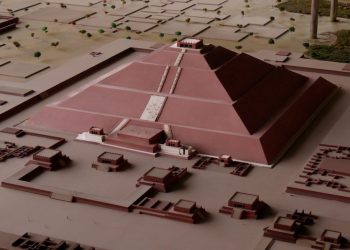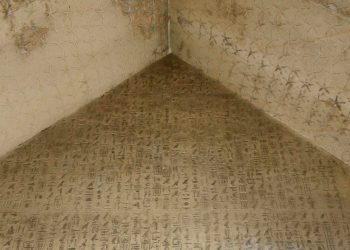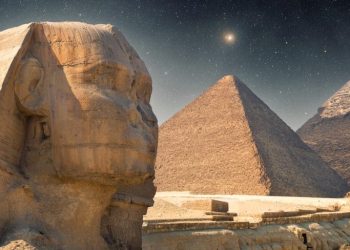If you ask an Egyptologist about the Pyramids of Giza, their history, meaning, and purpose, the answer is straightforward. The pyramids were built as ancient tombs for the deceased Pharaohs. In fact, the Great Pyramid of Giza specifically is believed to represent the culmination effort of the pyramid builders. It is the greatest ever built in Egypt. As Egyptologist Ahmed Fakhry puts it, not only is the Great Pyramid the largest monument of its kind ever built. But for the excellence of workmanship, accuracy, and beauty, it is the chief of the seven wonders of the ancient world. The pyramid has been studied throughout th years. In fact, egyptologists have studied it for over one hundred years. Despite this, many mysteries remain. One of the greatest, personally, is why there are no blueprints or texts mentioning its construction.
There is nothing dating back from the Fourth Dynasty that mentions its construction.
An enigma
You would think that building such a massive structure would have required many blueprints. We know it required a massive workforce. It required extraordinary planning. It was a behemoth effort. Not only the transportation of some of the most massive stones but the effort of placing them as the pyramid grew. Not one archeologist has the definitive answer as to how this was done. In fact, attempts to replicate the pyramid’s construction, albeit in a smaller dimension, in modern times failed. It remains a complete mystery how, for example. the ancient Egyptians transported some of the most massive stones from Aswan. Aswan was an Ancient Egyptian quarry. It produced some of the most massive stones for the construction of the pyramid. Interestingly, Aswan is located some 800 kilometers away from the construction site of the pyramid. Egyptologists say that the massive stones were transported via boat.
Massive stones
A majority of the blocks for the construction came from the Giza Plateau, but others were imported by boat down the Nile. The casing is made of white limestone from Tura, while the structure of the King’s Chamber is made of granite blocks from Aswan weighing up to 80 tonnes each. What is perhaps the most fascinating thing about the pyramid is the number of stones it features. A total of 2.3 million blocks are believed to make up the Great Pyramid. The construction involved 5.5 million tonnes of limestone, 8,000 tonnes of granite, and 500,000 tonnes of mortar. How this was sourced, transported, and placed atop the pyramid remains a mystery. Egyptologists theorize it was via massive, wooden ramps that the Egyptians managed it. Since there are no written accounts of it, we cannot say for sure.
What the pyramids looked like
What the pyramid looked like more than 4,500 years ago is another mystery. Since there are no accounts of the initial construction describing the pyramids, we cannot know what their appearance was like. We can theorize, however. We can imagine what the massive structures looked like. By their sheer size, we can probably imagine that the pyramids were stunningly decorated. Some accounts, long after the pyramids were built, suggest that the Great Pyramid, for example, shone like a star as sunlight reflected off its polished surface. Additionally, some stories even suggest that the Great Pyramid shone so brightly that it was visible from miles away. I would love to have a time machine and travel back in time to see what the pyramids looked like when they were completed.
Since I cannot, this stunning video will do just fine. It illustrates, in theory, what the Giza plateau and its pyramid may have looked like some 4,500 years ago. Also, here is an illustration from Harvard.
Have something to add? Visit Curiosmos on Facebook. Join the discussion in our mobile Telegram group.











